Scott | Richard Rutledge
- First names
Richard Rutledge
- Age
22
- Date of birth
04-04-1922
- Date of death
15-10-1944
- Service number
7021372
- Rank
Rifleman
- Regiment
Royal Ulster Rifles, 2nd Bn.
- Grave number
IV. D. 9.

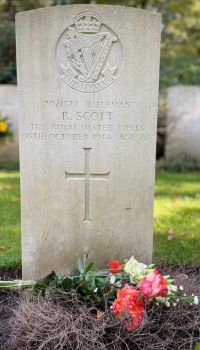
Biography
Richard Scott was killed in action on 15 October 1944 in the vicinity of Overloon. He was 22 years old at the time and was a Rifleman in the 2nd Battalion of the Royal Ulster Rifles (Service Number 7021372). He was initially buried at Helderse Bossen Cemetery, Overloon, and on 29 May 1947, he was reburied in grave IV. D. 9 at the CWGC Cemetery in Overloon.
Family background
Richard Rutledge Scott, known to his family as Dickie, was born on 4 April 1922 in Belfast. His parents were Richard Rutledge Scott (1885) from Belfast and Jeannie (Jane) Bishop (1884) from Glasgow. Richard Sr and Jane married on 16 October 1907 at Christ Church in Belfast and had five children.
Richard had one brother, William Bishop Scott (1909), and four sisters, Gertrude Ivy (1911), Emily, Lily and Jeannie.
His brother William Scott (Platoon Sergeant 7022044) served with the Royal Inniskilling Fusiliers and was involved with the regiment in fighting in North Africa, including the campaigns in Egypt and Libya, and in the later Italian campaign. He survived the war.
Military background
It is not known exactly when Richard joined the army and the Royal Ulster Rifles, but with this regiment he landed on the beaches of Normandy, on Sword Beach, in June 1944. This was followed by gruelling marches, carrying heavy packs, through mud and under fire, towards Caen. They fought in the Battle of Normandy, particularly in Operation Charnwood, where they were the first British troops to enter the city of Caen, which had previously been the scene of fierce fighting during the British attempt to capture it.
Around 20 July, Richard stayed at a Regimental Aid Post (RAP) near Troarn to have his sore feet treated. Troarn was located in the British sector of Normandy (east of Caen) and was a gathering and rest point for British units, including the Royal Ulster Rifles, during the summer of 1944.
From mid-July to mid-September, they remained in France, alternating between periods of combat and periods of rest and training. On 16 September, they made the long journey from their last base in France in Hacqueville to Naast near Soignes in Belgium. The War Diary states: “From Albert to Mons, the streets of the towns were full of people who gave us a warm welcome and gave us fruit. In some places, the crowds that gathered made it difficult for the convoy to get through”. The next day, they drove another 112 kilometres to Kolis near Lille St Hubert. Once again, ‘cheering crowds welcomed us in every town and village and handed us coffee and more fruit’.
On 18 and 19 September, the battalion was involved in expanding and reinforcing the bridgehead over the Scheldt Canal that had already been established by the 50th Division.
On 21 September, they crossed into the Netherlands from Belgium at Maarheeze, where they rested until the 24th before moving on to Deurne on the 15th, Bakel on the 29th, Beers on 1 October and then Cuijk on 2 October. They remained in the Cuijk area until 11 October, where they experienced some shelling but also received training and relaxation. The War Diary reports that ‘The battalion’s football team played against a local team in Beers, with our team winning easily 5-1. The match was watched by a large crowd and the pipe band received loud applause when they played during the break and after the match.’
Read a detailed account of 8 October 1944, the day of this match, told after the war by the son of Sergeant Reginald Hammersley, who played in the match and survived the war.
On 12 October, the battalion moved about 10 kilometres south of Cuijk via Haps, St Hubert and Wanroij to the vicinity of Sint Anthonis. It was decided that the 3rd British Infantry Division, of which the battalion was part, would clear the wooded area up to Venray and possibly further. The battalion’s role was to lead the brigade with the aim of capturing and clearing the large forest southwest of Overloon. The next day, they marched south from Sint Anthonis and the initiative began at 9 a.m. They suffered a few casualties while crossing the open terrain, but had more cover once they were in the forest.
However, the forest presented its own problems, as it varied in thickness, the paths through it were soft and sandy, and the paths and woods on the map bore little resemblance to the paths and woods on the ground. However, most of the enemy had left the forest and by 1800 hours they reached their intended position. Tanks were unable to help because they could not follow the infantry through the forest. No vehicles could even reach the front companies because the tracks had not been cleared of mines, so food, water, blankets and cloaks had to be manoeuvred to the company positions by relay teams. They also had to dig in, so little sleep was had that night. During the day, there were not many casualties, and these few were mainly caused by mortar fire.
On 14 October, the battalion remained in position while the 2nd Lincolns came through and launched an attack on woods 500 metres to the south. Much of the day was spent pulling sand trucks out of the sand that had become stuck during the previous evening’s move. The front companies were able to return in small numbers at a time to the furthest point the transport could reach, which saved having to manoeuvre the food forward.
Under cover of darkness, the A and C companies moved into the forest that night to help the Lincolns hold it during the night and the following day. Unfortunately, just as the A company entered the forest, a salvo from a Nebelwerfer landed directly beneath them. It killed two men and wounded ten more.
The battalion remained in the same positions until after sunset the next day, 15 October. All the companies’ positions were fired upon and shelled throughout the day. After sunset, the battalion headquarters and the remaining companies moved to positions in the Lincoln Woods and dug in for the night.
It was on this day that sadly Richard Scott was killed in action.
Together with six of his comrades, he was temporarily buried in the Helderse Bossen and reburied at Overloon War Cemetery on 29 May 1947.
The other comrades were: Albert Victor Bushell, Kenneth Erskine, John Irvine, Melvern Roy Guy, William Henry Lewis, Anthony Tuohy and Wil van der Burgt.
Photo’s

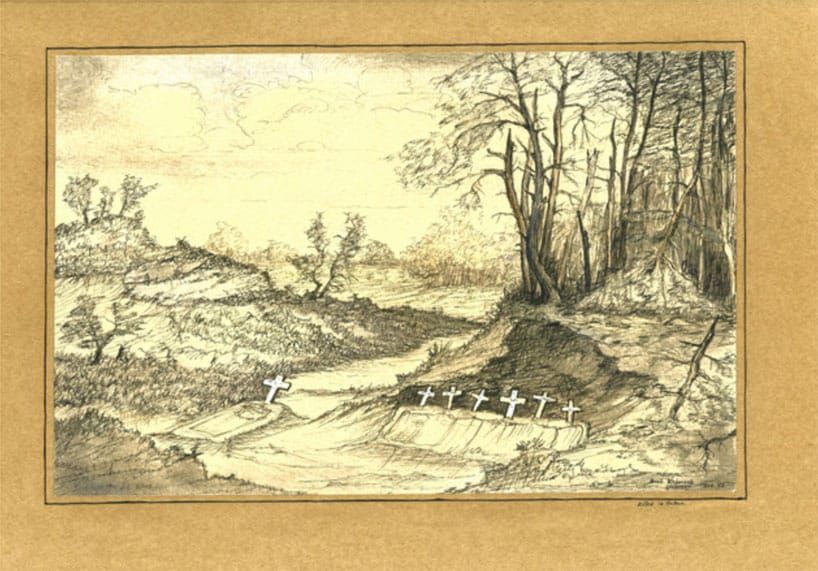

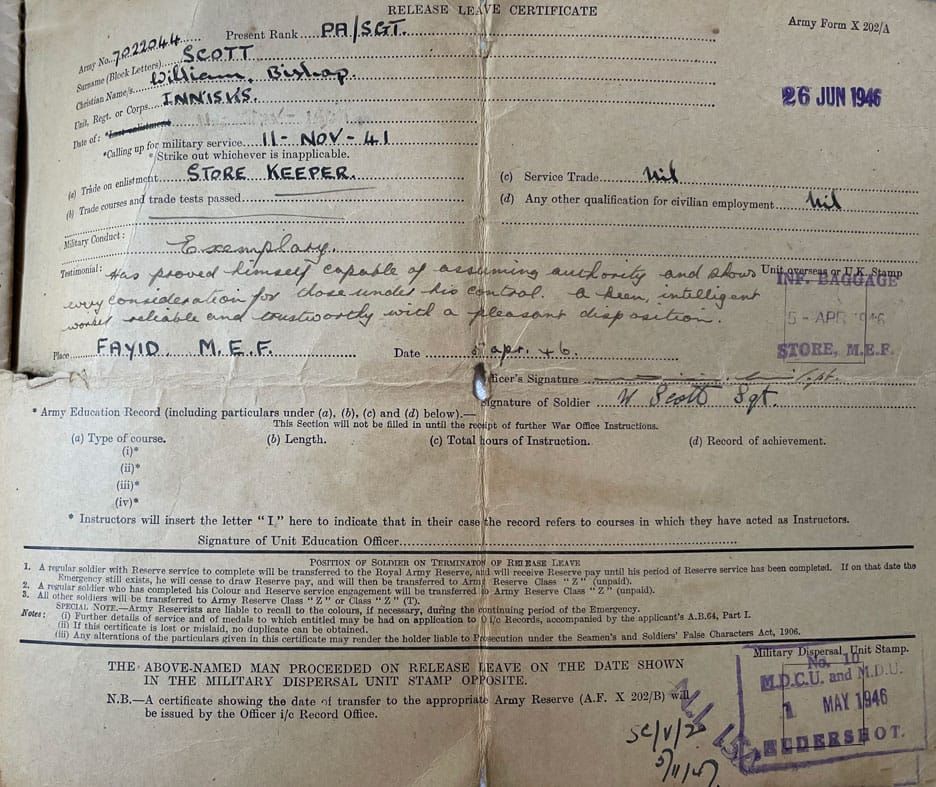

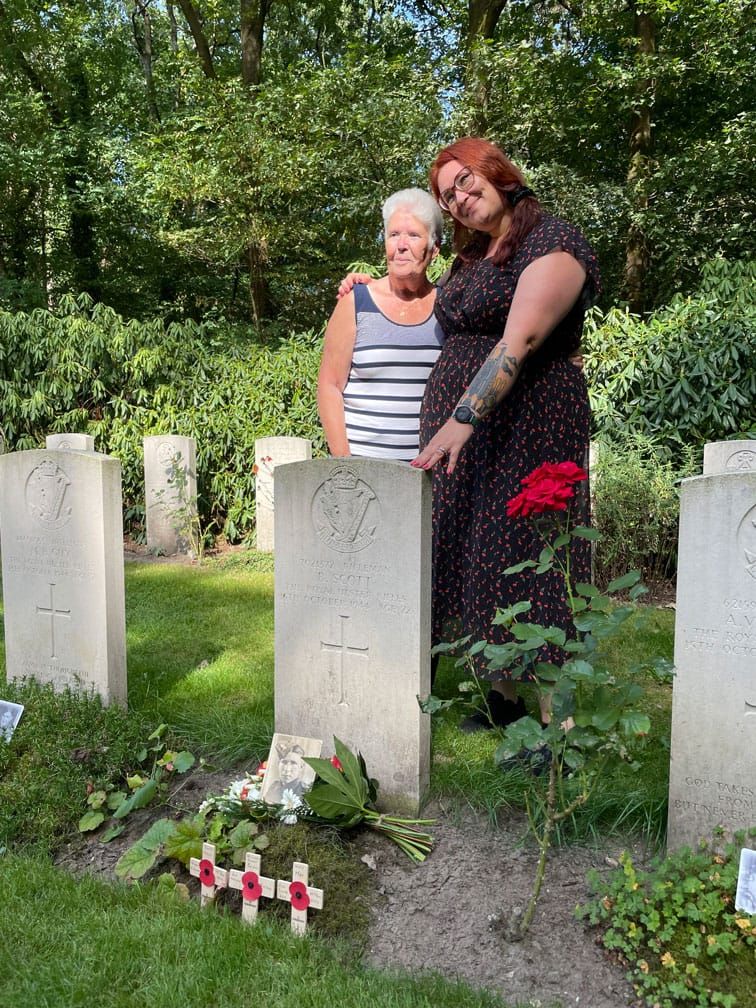
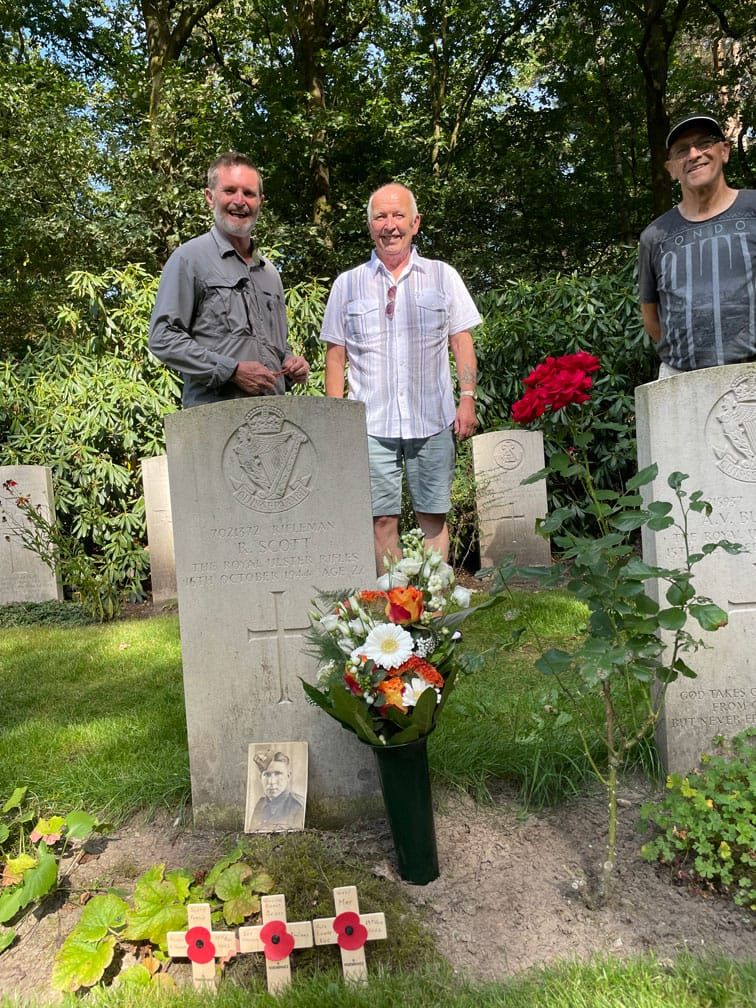


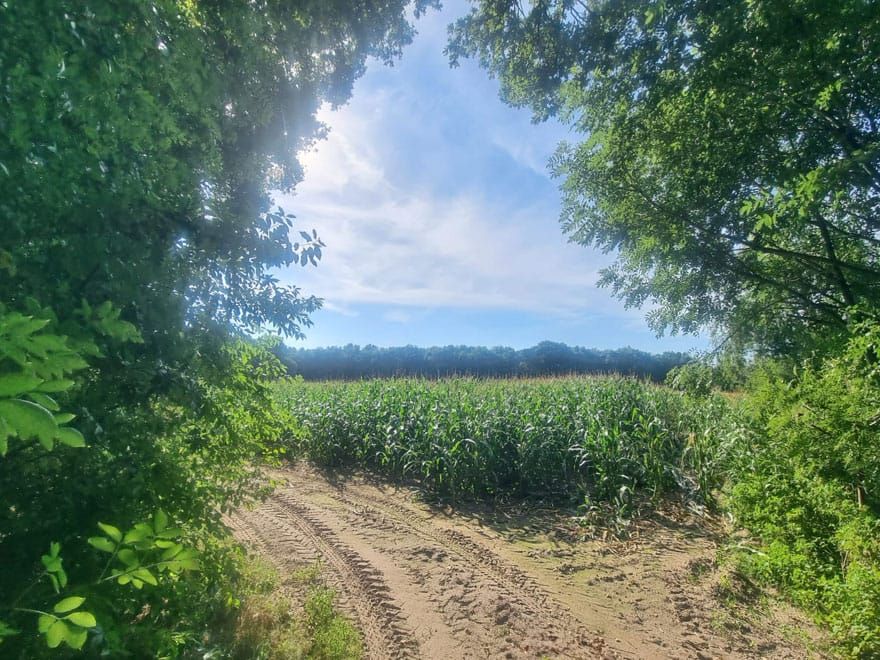
Sources and credits
Royal Ulster Museum in Belfast
Help from Elaine Gathercole in finding the right Scott family.
Tess Gielen, adoptive guardian of Richard Scott’s grave for further research and maintaining contact with the Scott family.
May Lowry Scott, daughter of William Scott, for the information and photo of Richard Scott.
This biography was compiled by our Foundation based on our own research and stories from other soldiers who served in the same regiment or participated in the same battle on that day. Part of the collective work within the Foundation was used for this purpose.
